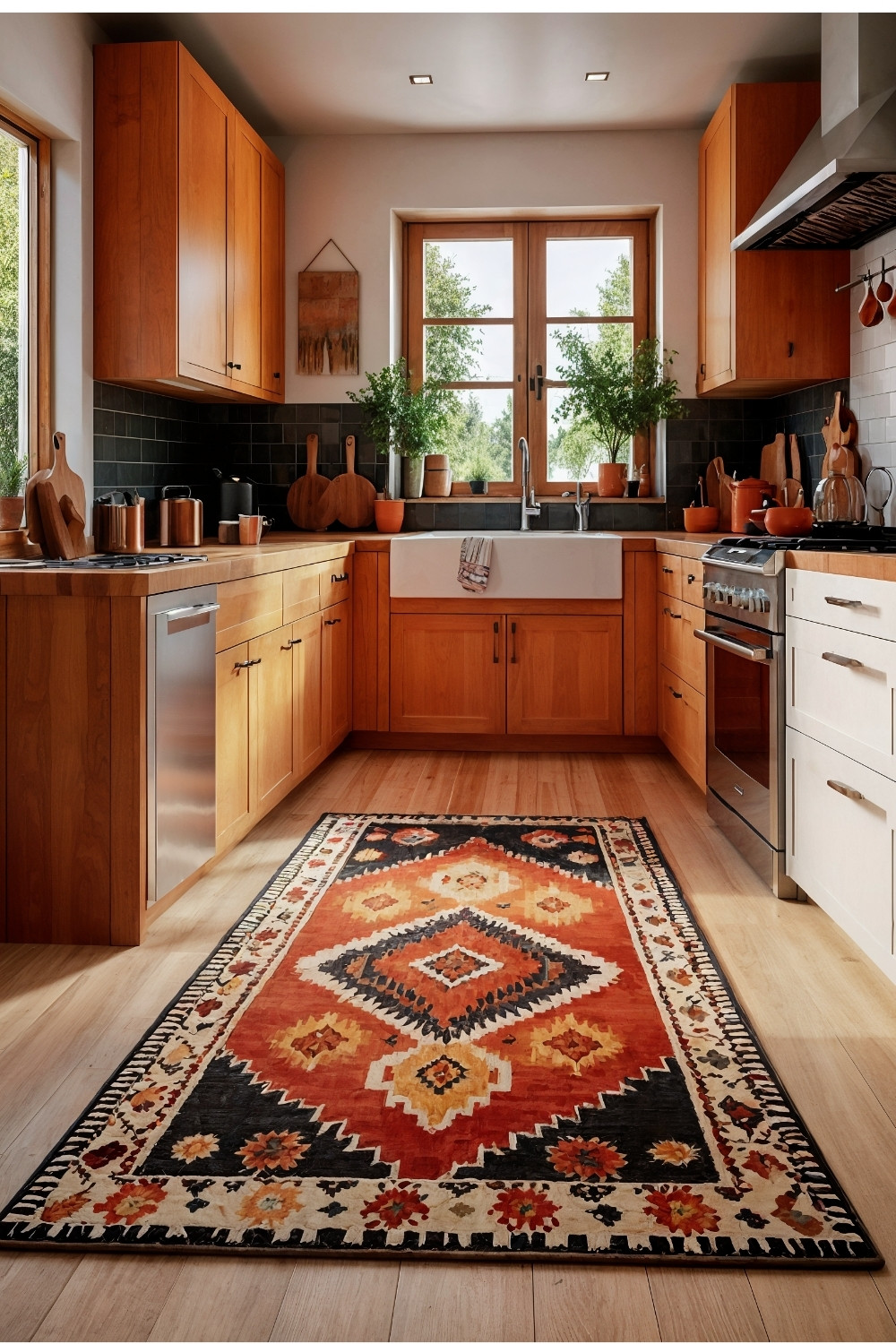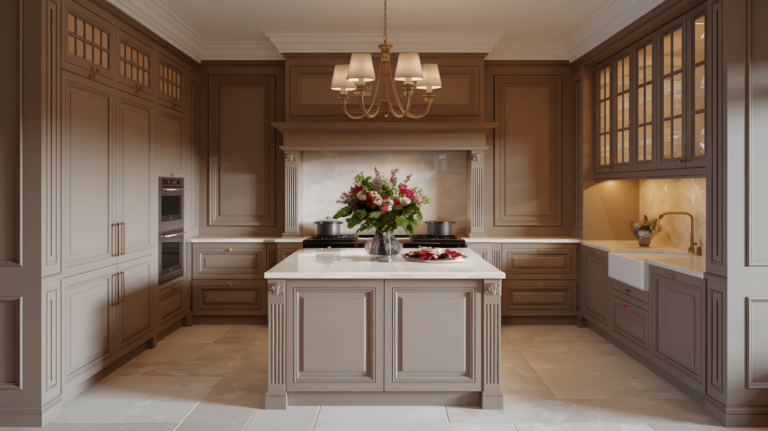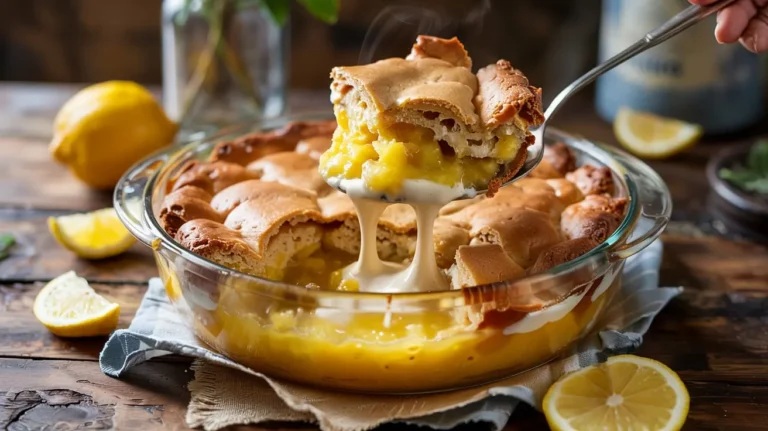In my experience working with homeowners on kitchen renovations that blend contemporary and bohemian elements, I’ve observed that modern boho style often creates some of the most personality-rich and welcoming kitchen environments. Through various projects, I’ve learned that this design approach typically combines natural materials, eclectic patterns, and contemporary functionality while maintaining the relaxed, creative atmosphere that defines bohemian aesthetics.
Note: For any electrical work, plumbing installations, structural modifications, or major appliance installations mentioned in this article, always consult with licensed professionals to ensure safety, code compliance, and proper installation.
What makes modern boho kitchen design particularly appealing is its emphasis on personal expression through mixed textures, natural elements, and curated collections while maintaining contemporary functionality. I’ve found that homeowners often choose this approach because it typically creates spaces that feel both stylish and lived-in, allowing for creativity and individual expression within practical kitchen layouts.
The key to successful modern boho kitchen design often lies in balancing eclectic elements with contemporary efficiency through thoughtful layering, quality natural materials, and strategic use of patterns and colors. Effective designs typically incorporate handcrafted details, organic textures, and personal collections while ensuring modern appliances and workflows support daily cooking needs.
Here are 15 modern boho kitchen design concepts that often work well in various home styles and budgets, based on observations from numerous eclectic and contemporary kitchen renovation projects.
1. Pattern and Texture Layering: Visual Richness Development
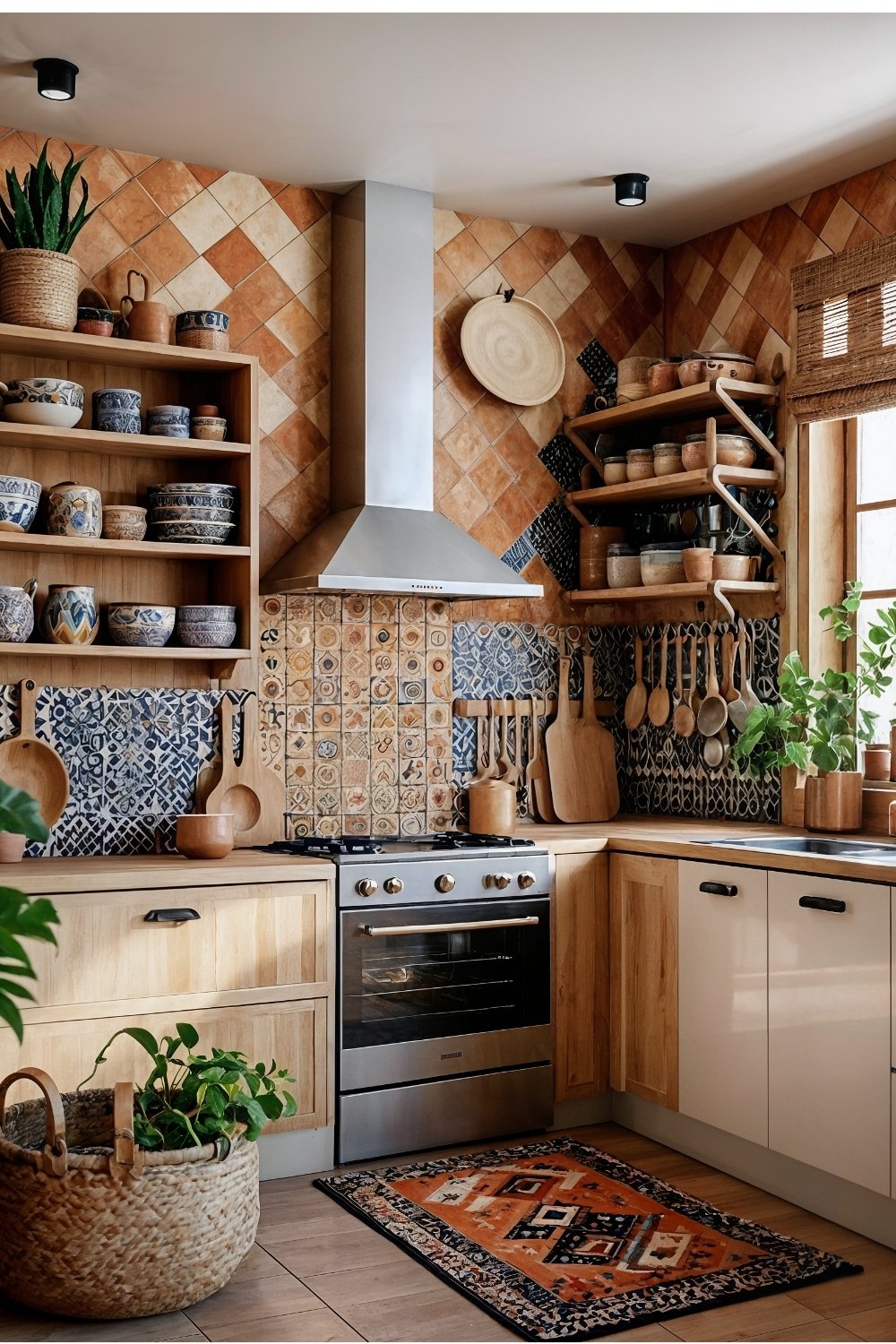
This design strategy often appeals to homeowners wanting dynamic, interesting environments. Mixed patterns through tiles, textiles, and decorative elements typically create depth, while varied textures add tactile interest without overwhelming functional spaces.
Design consideration: Pattern combinations often require careful scale coordination and color balance, while multiple textures typically need consideration of cleaning and maintenance requirements in active kitchen environments.
Practical benefit: Layered elements often hide normal kitchen wear better, while varied textures typically create more interesting, engaging environments that reflect personal style and creativity.
2. Natural Wood Integration: Organic Warmth Addition
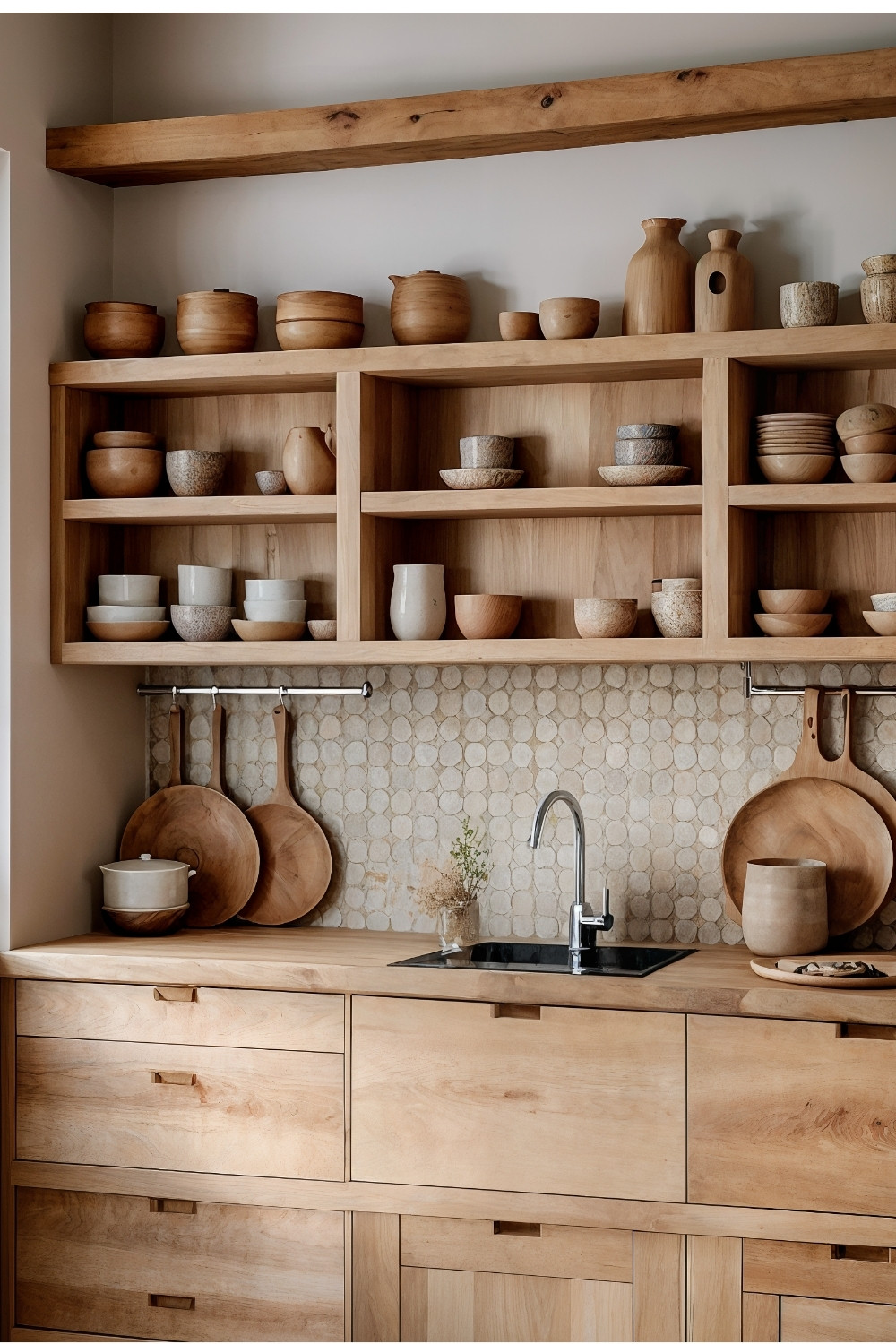
This material strategy often appeals to homeowners seeking to ground eclectic elements with natural foundations. Wood countertops, open shelving, or cabinetry typically provide warmth while balancing colorful patterns and contemporary appliances.
Design consideration: Kitchen wood installations often require appropriate sealing and maintenance for moisture resistance, while natural materials typically need coordination with other finishes for cohesive appearances.
Practical benefit: Quality wood elements often improve with age and use, while natural materials typically create healthier indoor environments and timeless appeal that adapts to changing décor.
3. Earth-Inspired Color Palettes: Natural Harmony Creation
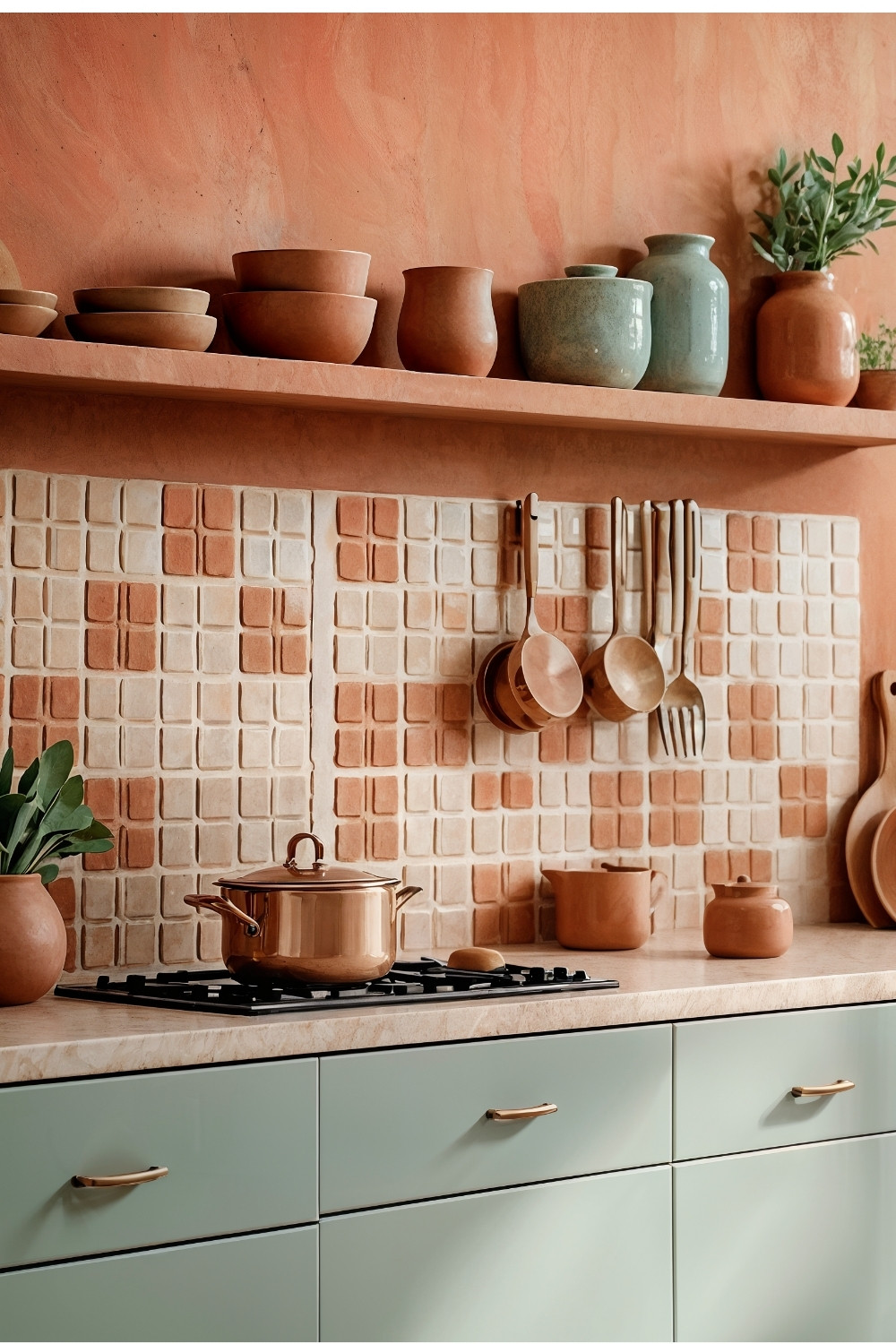
This color approach often appeals to homeowners wanting cohesive yet vibrant environments. Terracotta, deep greens, warm neutrals, and soft blues typically create soothing backdrops while supporting eclectic pattern combinations.
Design consideration: Earthy color schemes often require balance with lighter accents to prevent dark appearances, while natural hues typically need consideration of available light and space size.
Practical benefit: Nature-inspired colors often create calming environments, while earthy palettes typically provide versatile foundations for changing seasonal décor and personal collections.
4. Open Storage Display: Accessible Organization Solutions
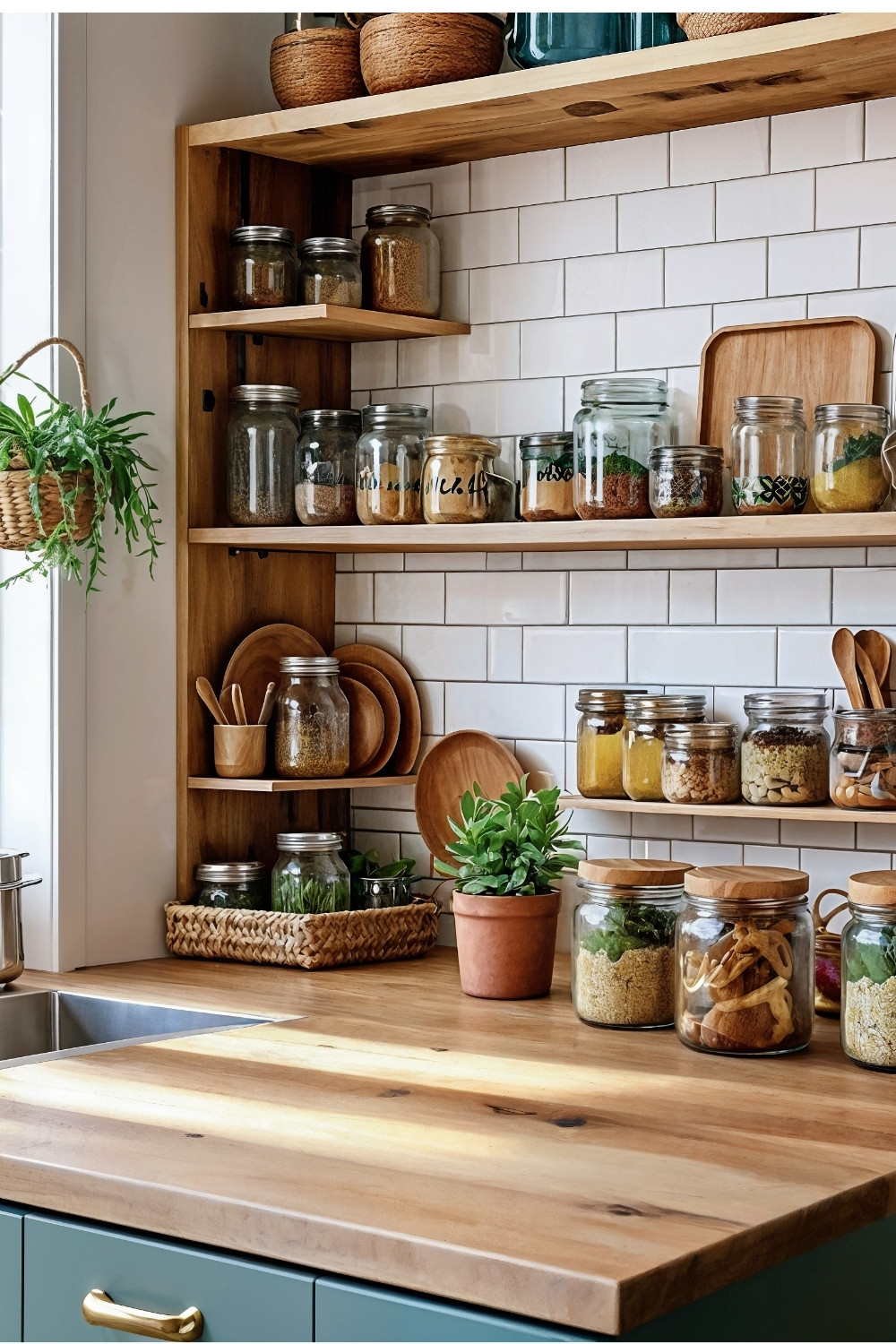
This storage philosophy often appeals to homeowners prioritizing accessibility and personality expression. Open shelving typically showcases collections while creating more casual, approachable kitchen environments.
Design consideration: Open storage often requires consistent organization and regular maintenance, while displayed items typically need protection from cooking grease and moisture in active kitchen areas.
Practical benefit: Accessible storage often improves cooking efficiency, while display opportunities typically allow for personal expression and easy access to frequently used items.
5. Statement Lighting Features: Atmospheric Illumination Elements
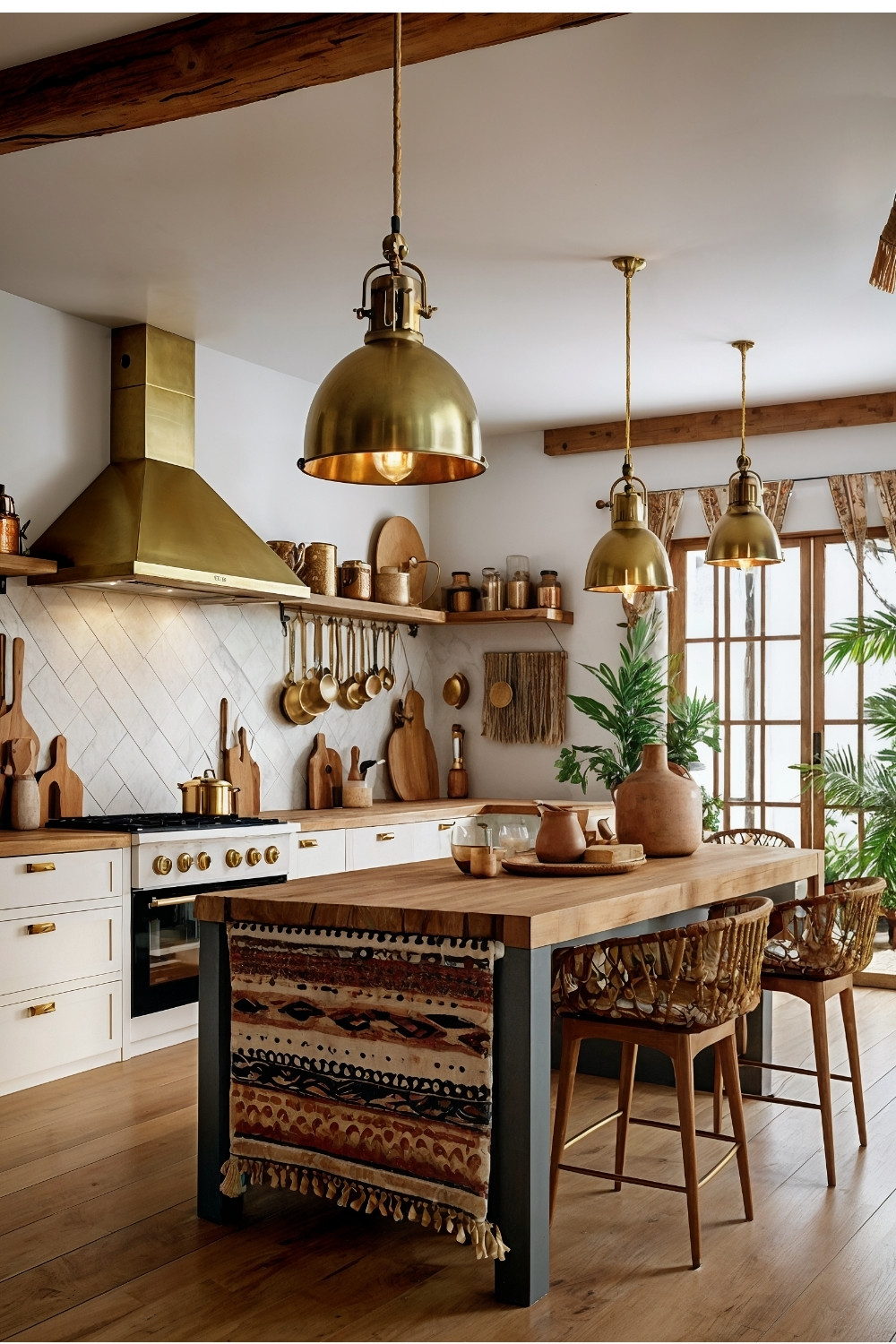
This lighting strategy often appeals to homeowners seeking both function and character. Vintage-style pendants or natural material fixtures typically provide necessary task lighting while enhancing bohemian aesthetics.
Design consideration: Statement lighting often requires proper electrical planning and appropriate placement for function, while decorative fixtures typically need coordination with overall design themes and ceiling heights.
Practical benefit: Quality lighting fixtures often provide long-term performance, while distinctive designs typically create focal points that enhance overall kitchen character.
6. Living Plant Integration: Natural Life Enhancement
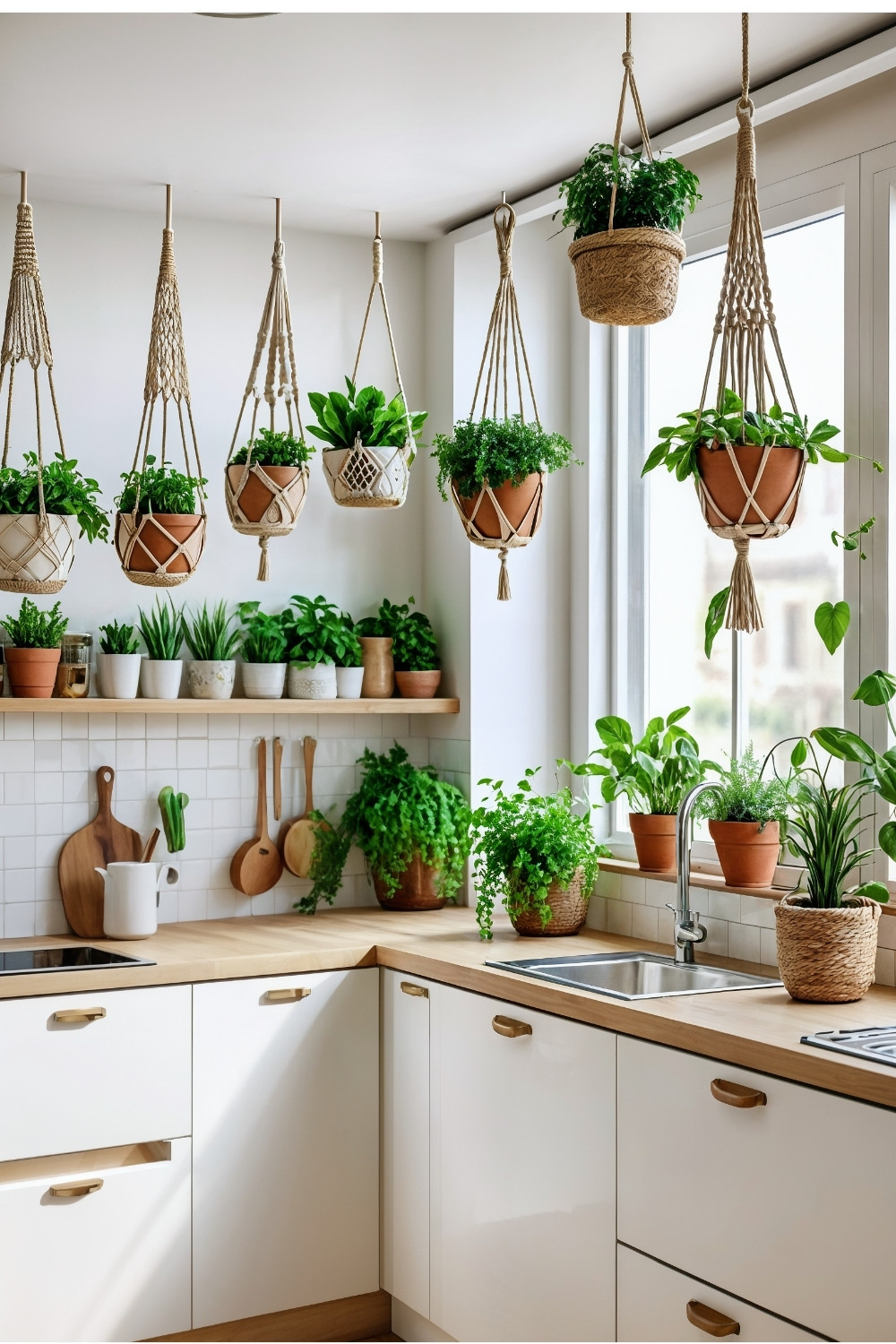
This biophilic approach often appeals to homeowners wanting fresh, vibrant environments. Strategic plant placement typically improves air quality while adding organic elements that soften hard kitchen surfaces.
Design consideration: Kitchen plants often need species selection appropriate for cooking environments, while plant placement typically requires consideration of light requirements, humidity, and maintenance access.
Practical benefit: Living plants often improve indoor air quality and psychological well-being, while natural elements typically create more welcoming, comfortable cooking environments.
7. Handcrafted Element Integration: Artisanal Character Addition
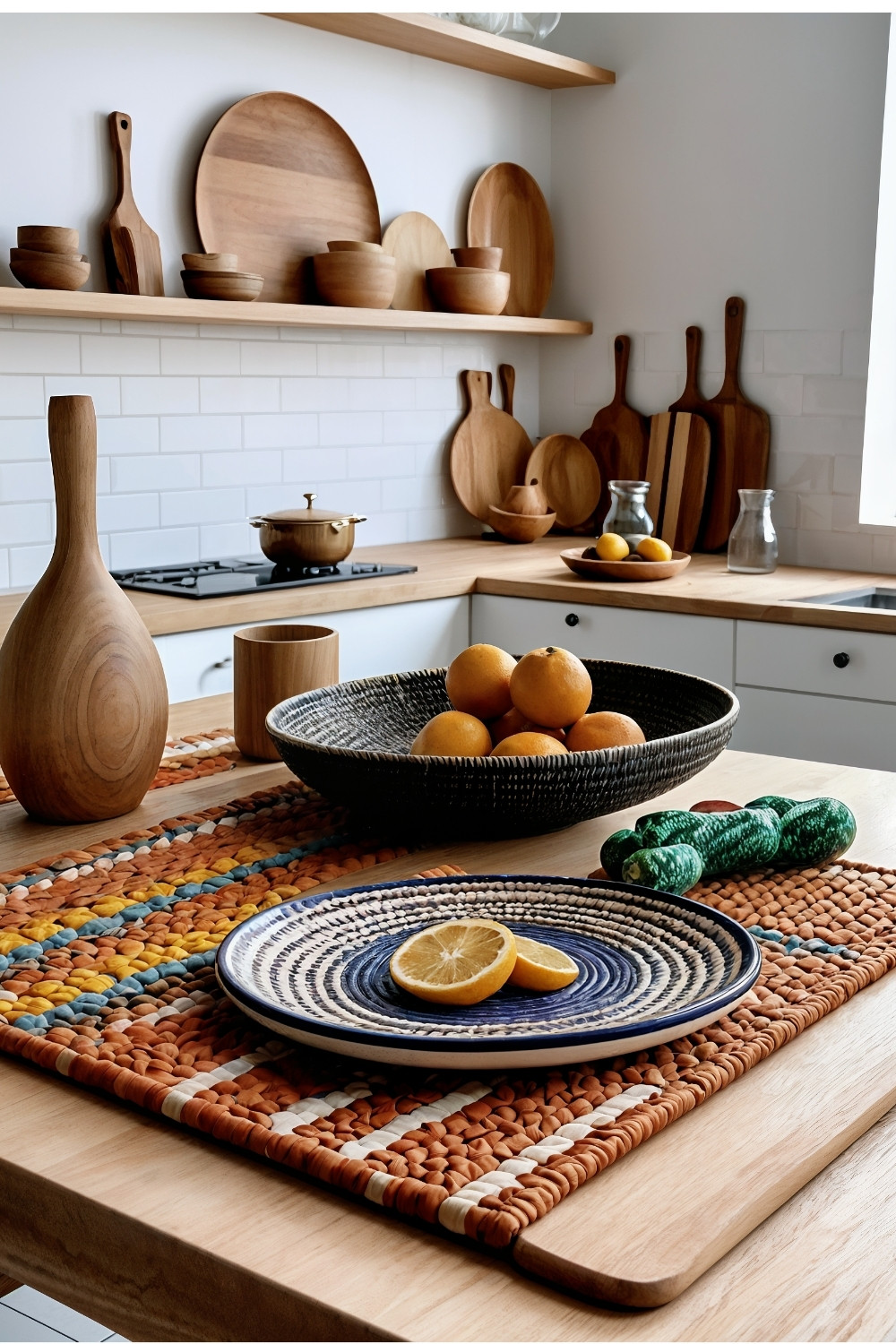
This personalization strategy often appeals to homeowners appreciating unique, individual character. Handmade ceramics, artisanal accessories, and crafted elements typically create distinctive environments that reflect personal taste.
Design consideration: Handcrafted items often require careful sourcing for quality and authenticity, while artisanal pieces typically need appropriate display and protection from kitchen conditions.
Practical benefit: Unique handcrafted elements often provide irreplaceable character, while artisanal pieces typically support creative communities and individual expression.
8. Textile Comfort Addition: Softening Element Integration
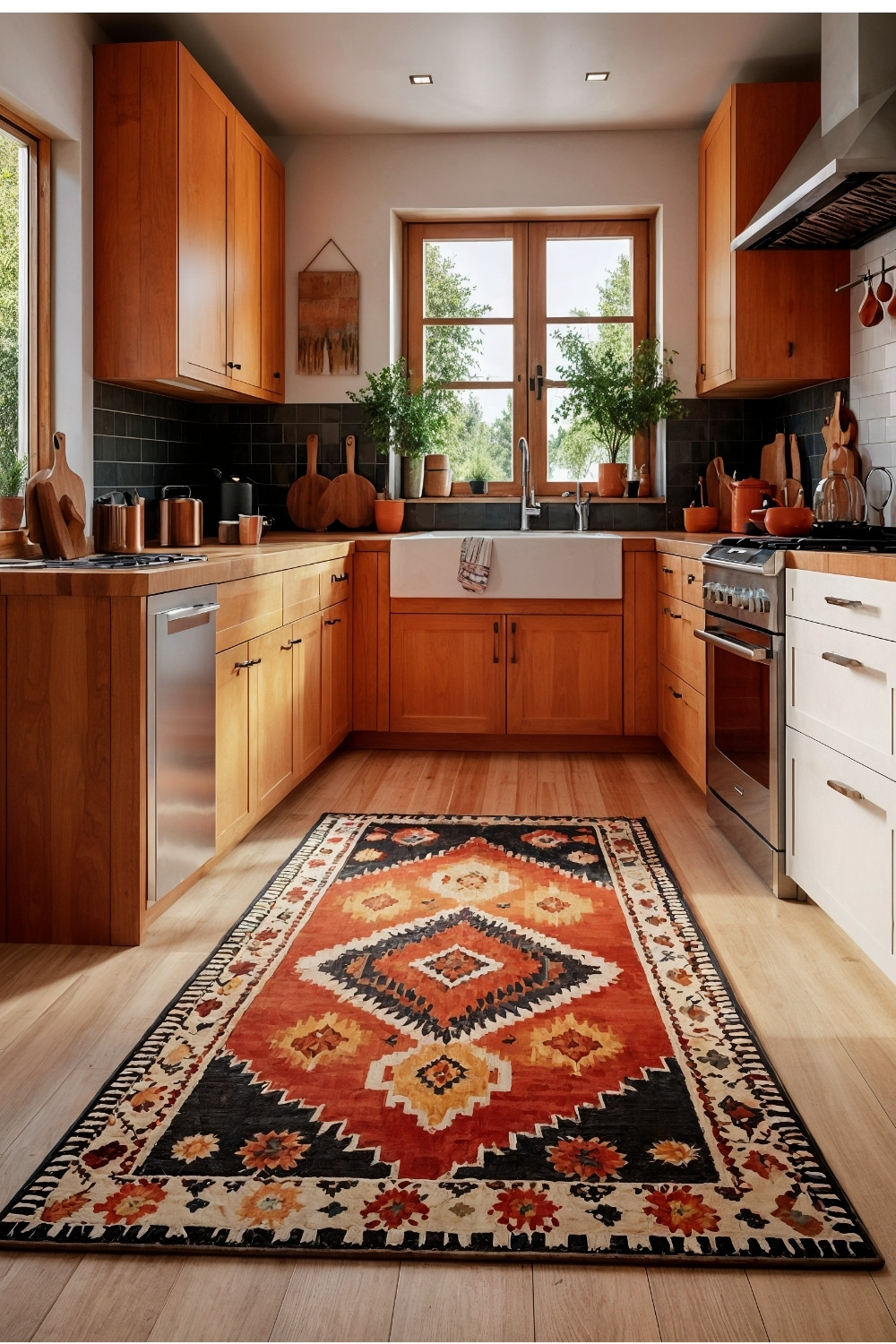
This comfort strategy often appeals to homeowners wanting to balance hard kitchen surfaces with softer elements. Patterned rugs, textured runners, and fabric accents typically add warmth without compromising functionality.
Design consideration: Kitchen textiles often require frequent cleaning and replacement due to cooking conditions, while patterned elements typically need coordination with other design features.
Practical benefit: Soft elements often improve comfort and acoustic properties, while easily changeable textiles typically provide affordable ways to update seasonal décor and color schemes.
9. Mixed Seating Solutions: Eclectic Character Expression
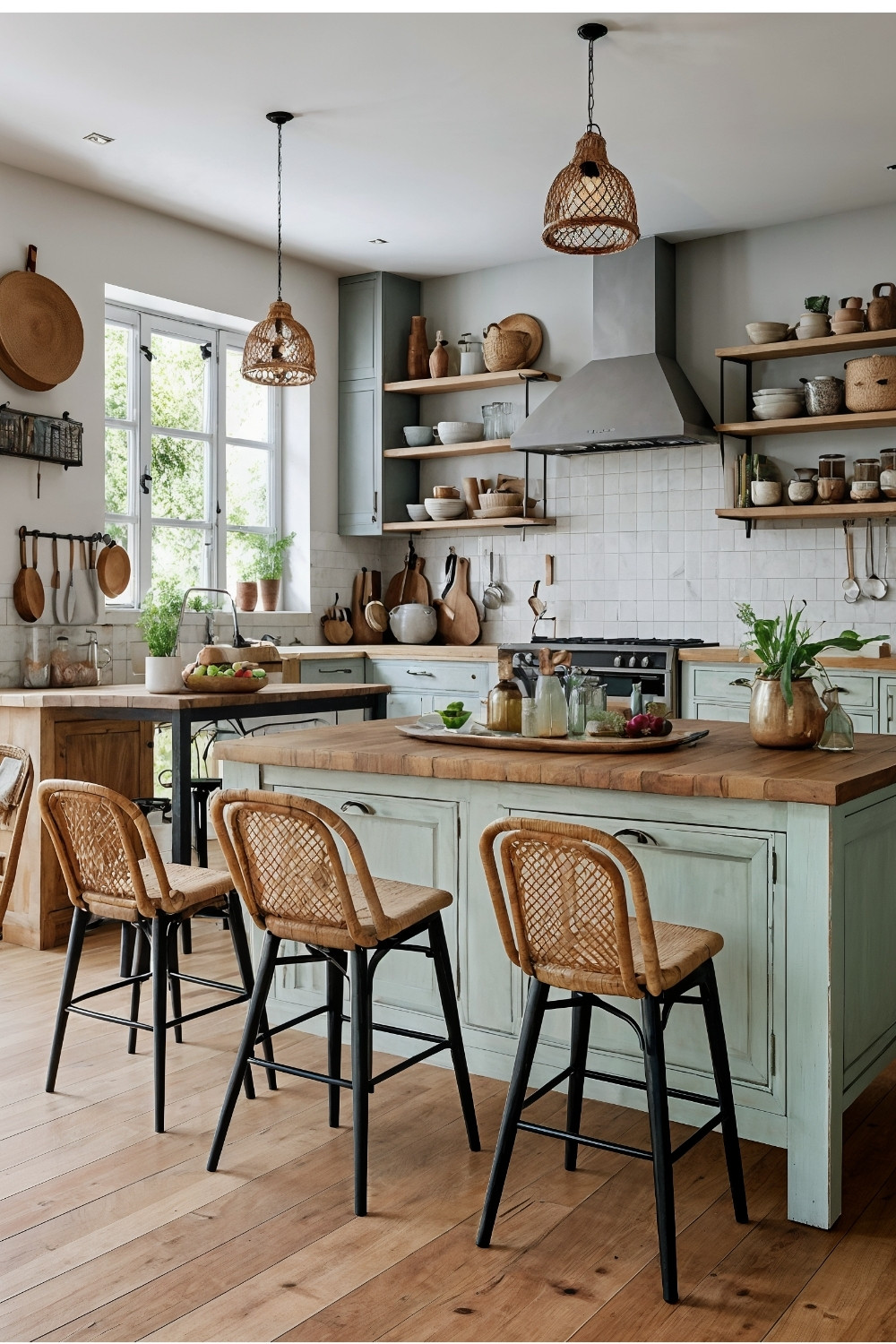
This furniture approach often appeals to homeowners wanting personalized, collected-over-time appearances. Combined seating styles and materials typically create interesting environments that reflect individual taste and creativity.
Design consideration: Mixed furniture often requires careful coordination for height and proportion compatibility, while varied materials typically have different maintenance and durability characteristics.
Practical benefit: Eclectic combinations often provide more interesting environments, while mixed seating typically allows for flexible use patterns and personal expression.
10. Bold Backsplash Features: Artistic Focal Point Creation
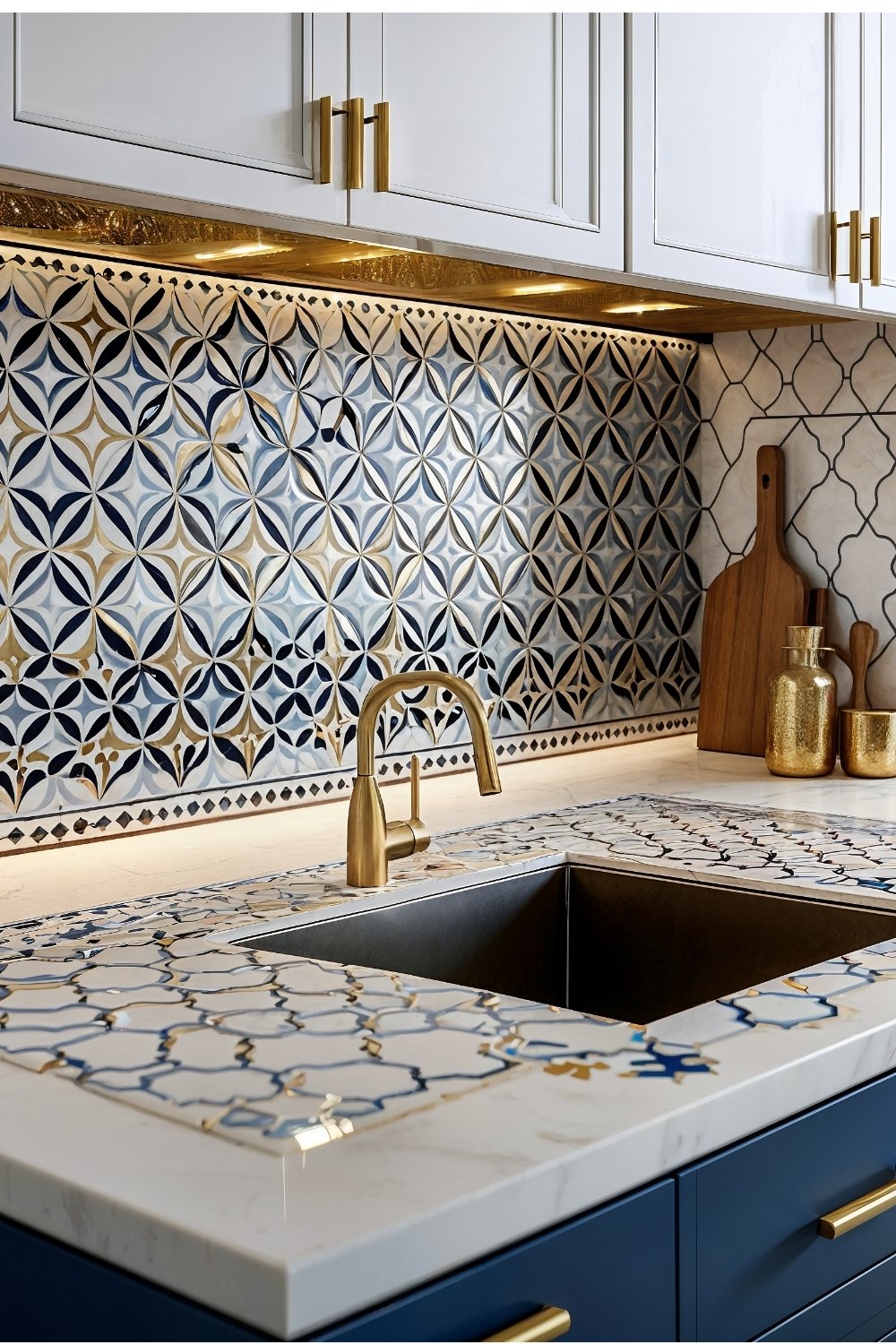
This design technique often appeals to homeowners wanting dramatic impact without overwhelming entire spaces. Patterned or colorful tile installations typically create striking focal points while containing bold elements within defined areas.
Design consideration: Statement backsplashes often require careful pattern and color coordination with other kitchen elements, while bold installations typically need quality materials for long-term satisfaction.
Practical benefit: Focal point features often provide maximum impact for investment, while contained bold elements typically allow for easier updates if tastes change over time.
11. Woven Texture Integration: Organic Detail Addition
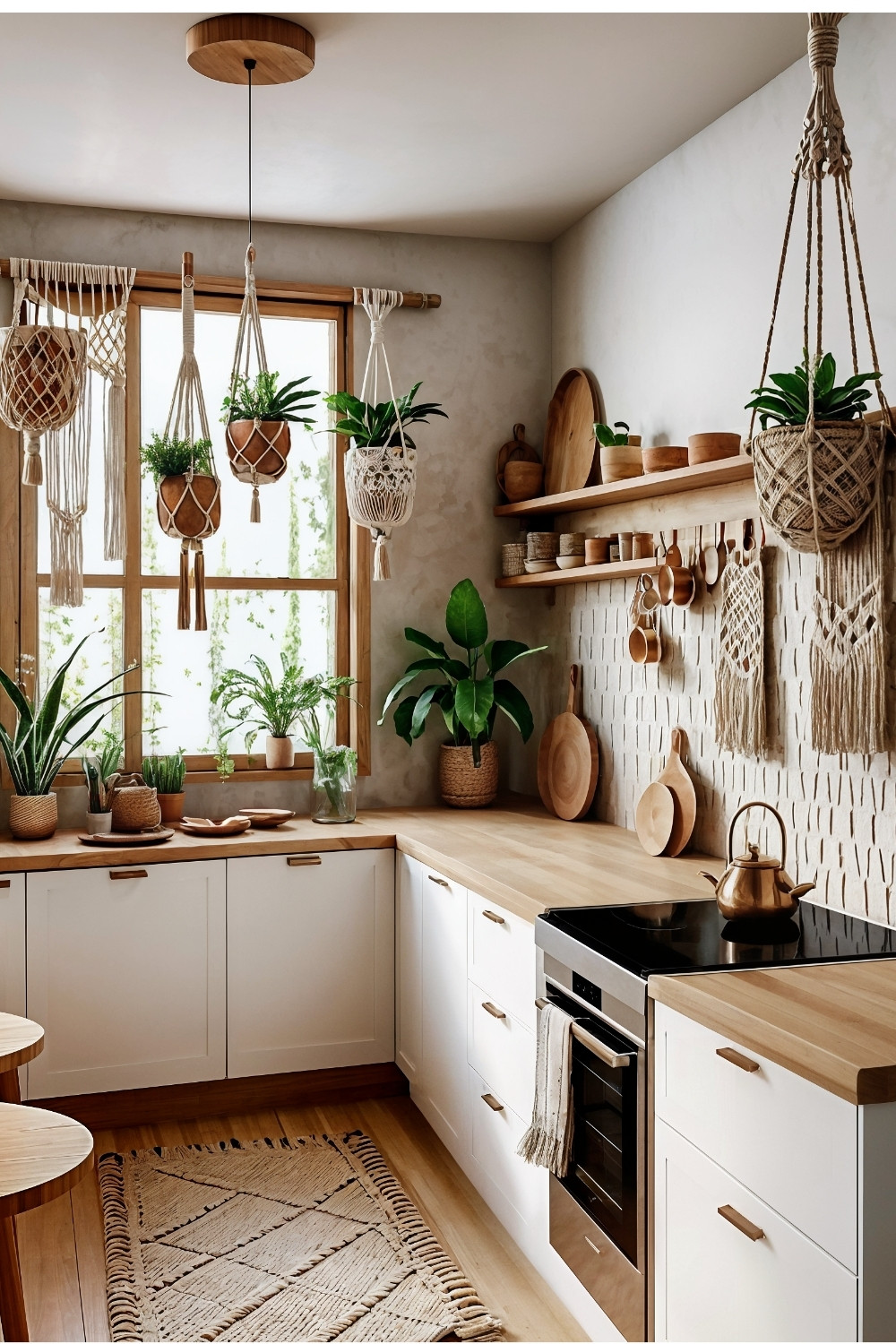
This material strategy often appeals to homeowners seeking authentic, handcrafted character. Macrame, baskets, and woven elements typically add textural interest while maintaining natural, organic aesthetics.
Design consideration: Woven materials often require appropriate placement away from direct heat and moisture, while natural fibers typically need consideration of cleaning and maintenance requirements.
Practical benefit: Natural woven elements often provide excellent storage solutions, while handcrafted textures typically create distinctive character that cannot be replicated with mass-produced alternatives.
12. Contemporary-Bohemian Balance: Modern Function with Eclectic Style
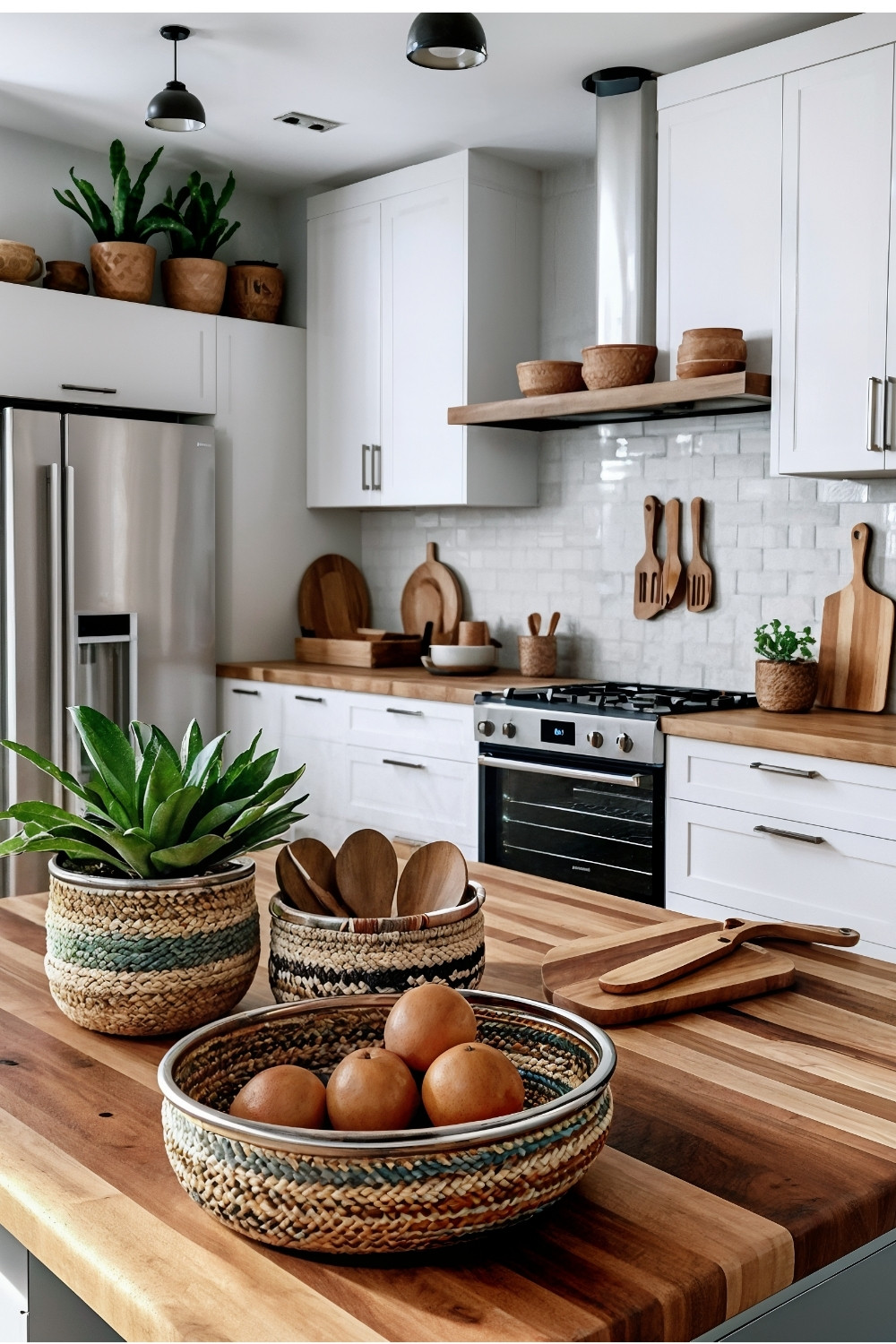
This integration approach often appeals to homeowners wanting updated functionality with creative character. Modern appliances softened with natural elements typically provide efficiency while maintaining personality.
Design consideration: Style balance often requires careful coordination between contemporary and bohemian elements, while modern appliances typically need appropriate integration with decorative features.
Practical benefit: Contemporary functionality often provides better performance, while bohemian softening typically creates more welcoming, personality-filled environments.
13. Collection Display Systems: Personal Expression Showcases
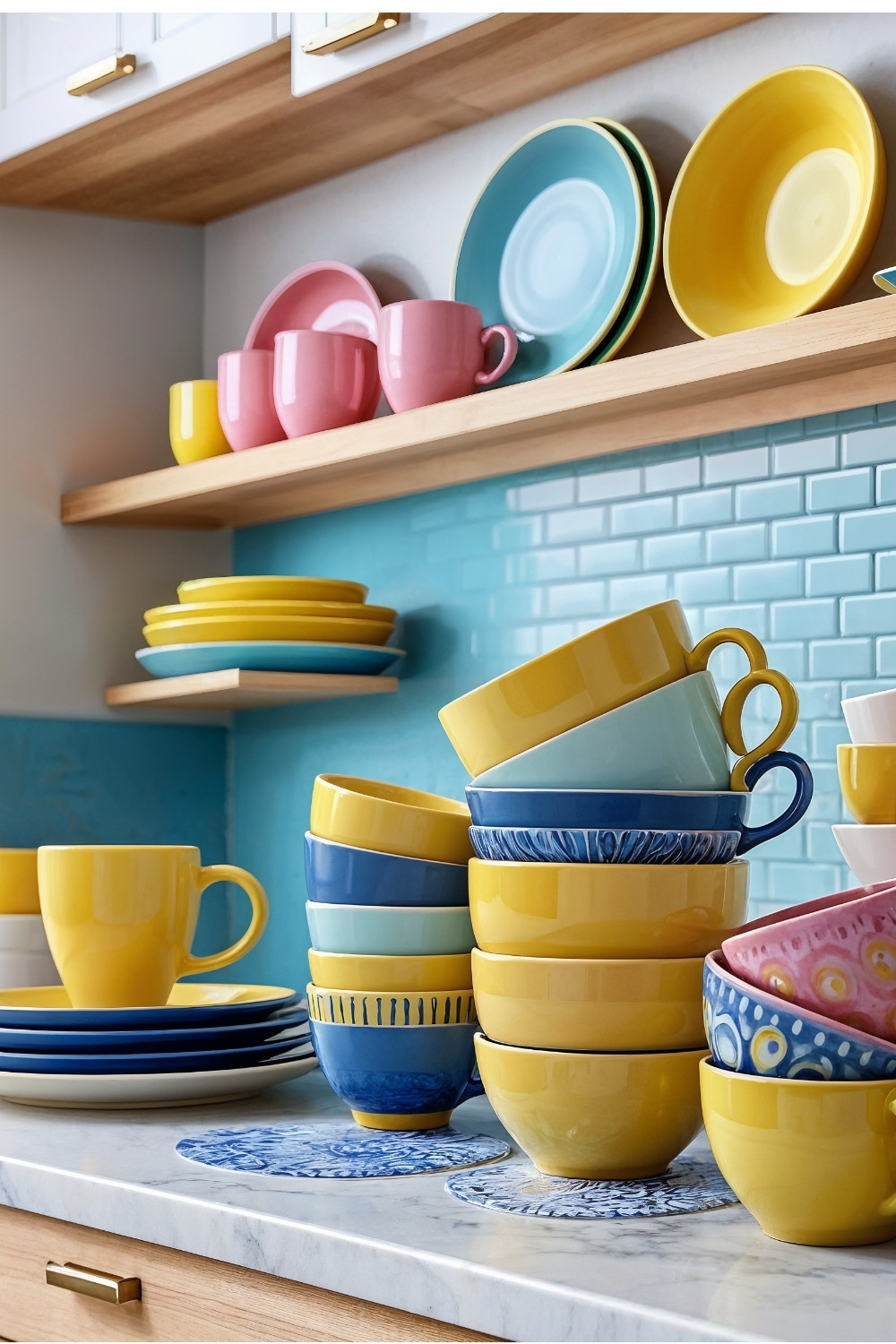
This organization strategy often appeals to homeowners wanting to showcase personal collections and unique finds. Colorful dishware, vintage pieces, and eclectic collections typically add personality while serving functional purposes.
Design consideration: Display systems often require dust protection and secure mounting, while varied collections typically need organization principles to avoid cluttered appearances.
Practical benefit: Personal collections often provide conversation value and individual expression, while functional displays typically make daily items more accessible and enjoyable to use.
14. Layered Illumination Design: Atmospheric Lighting Development
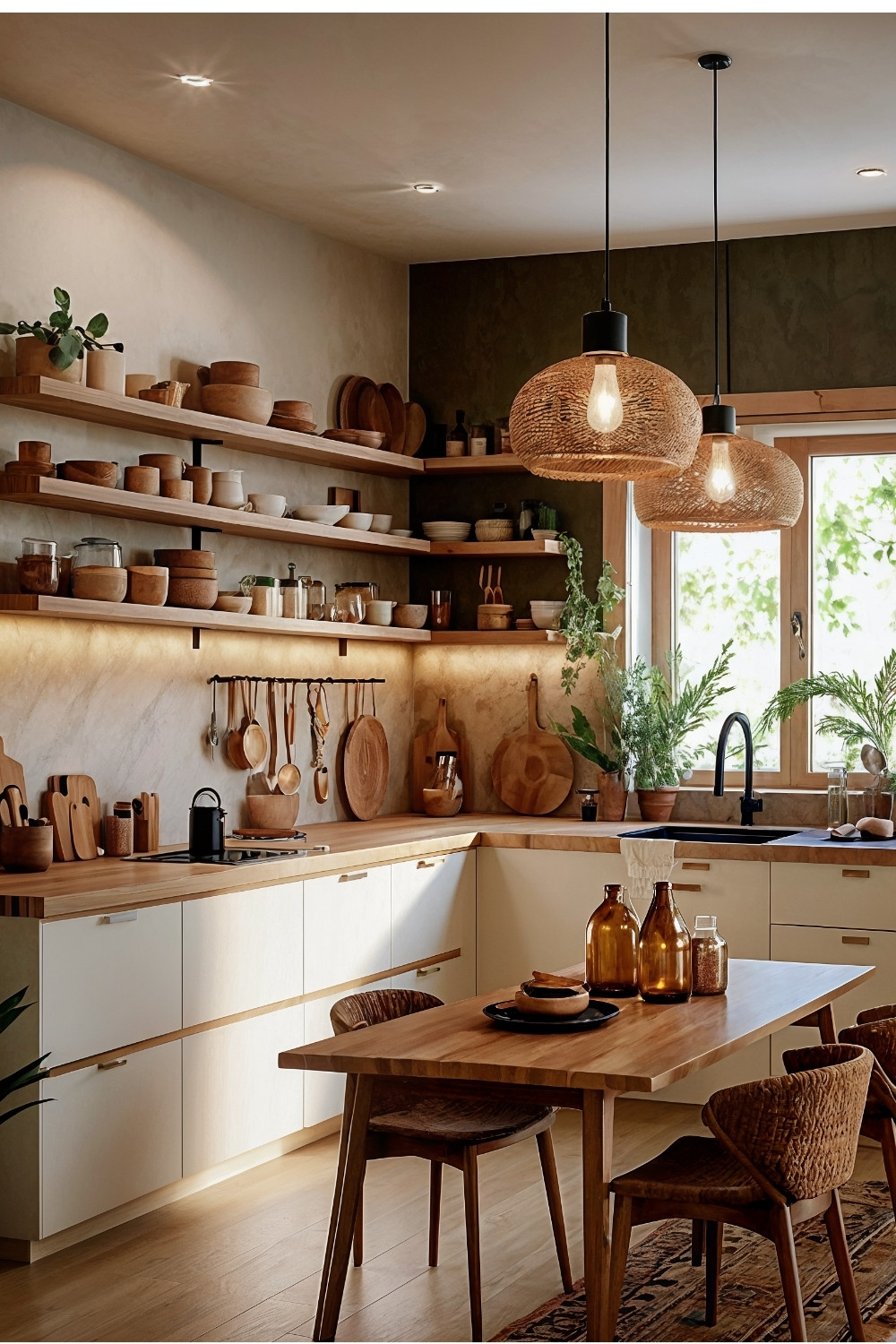
This lighting philosophy often appeals to homeowners seeking warm, inviting environments. Multiple light sources at different levels typically create flexible atmospheres suitable for various activities and times of day.
Design consideration: Layered lighting often requires multiple electrical circuits and dimmer controls, while varied fixtures typically need coordination for cohesive appearance and function.
Practical benefit: Flexible lighting often improves kitchen functionality, while atmospheric options typically create more enjoyable cooking and entertaining experiences.
15. Minimalist-Boho Fusion: Selective Eclectic Integration
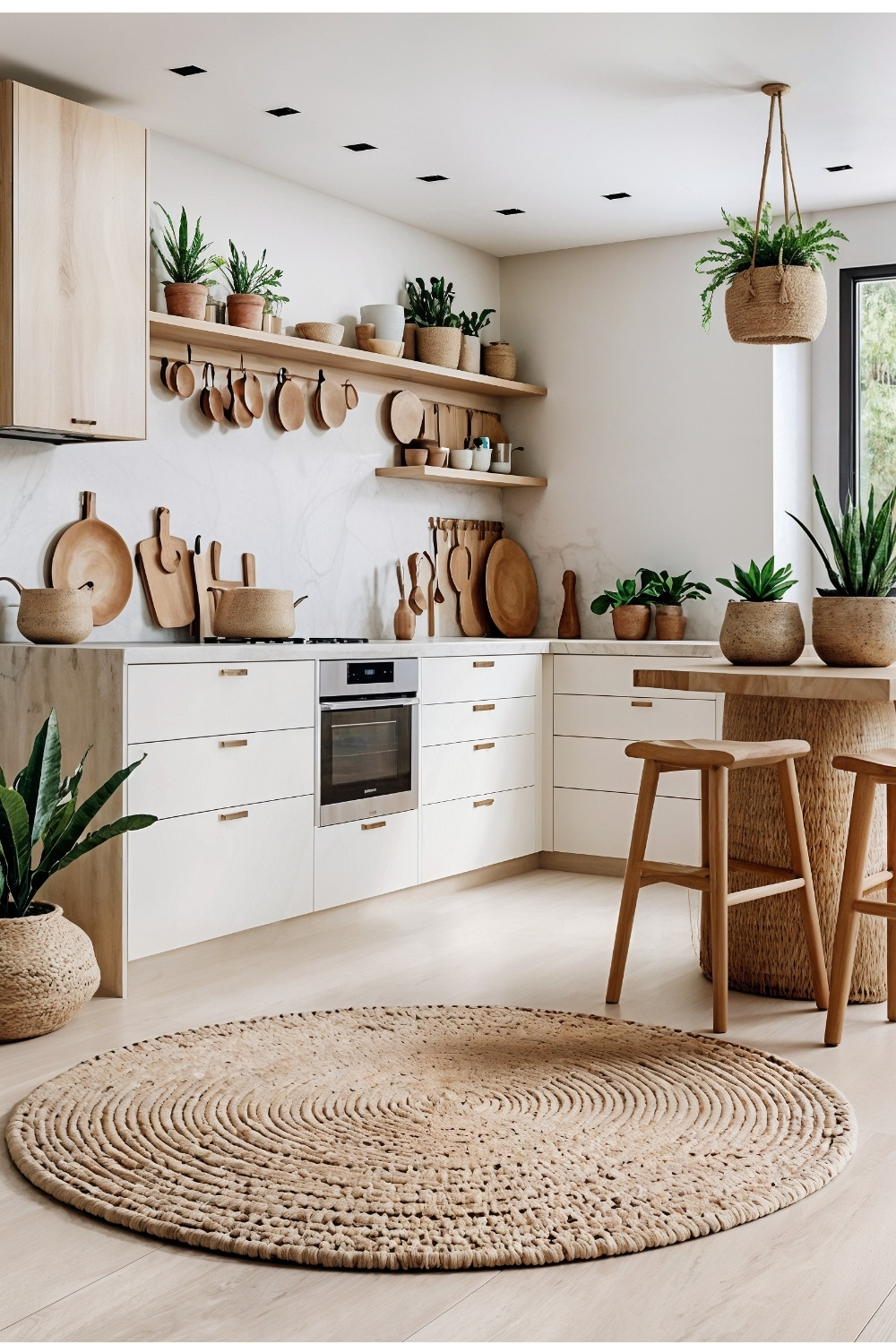
This balanced approach often appeals to homeowners wanting bohemian character without overwhelming busy lifestyles. Clean foundations with carefully selected boho elements typically create personality while maintaining organization ease.
Design consideration: Selective integration often requires careful curation to achieve balance, while minimalist foundations typically need strategic accent placement for maximum impact.
Practical benefit: Balanced approaches often provide easier maintenance, while selective bohemian elements typically allow for personal expression without sacrificing contemporary functionality.
Creating Your Modern Boho Kitchen
Understanding these design principles often helps homeowners create kitchens that successfully balance creative expression with practical functionality. Effective implementations typically start with neutral foundations and efficient layouts, then layer in natural materials, patterns, and personal collections that reflect individual style.
Successful modern boho kitchen projects often prioritize authentic materials and handcrafted elements while ensuring designs support contemporary cooking and entertaining needs. The result typically creates distinctive, welcoming environments that honor both bohemian creativity and modern lifestyle requirements.
When planning your modern boho kitchen renovation, consider how these elements work together to create cohesive environments that reflect both personal style and practical needs. The most effective designs often balance eclectic character with functional efficiency while ensuring long-term durability and maintenance ease.
Remember: For any electrical work, plumbing installations, structural modifications, or appliance connections related to modern boho kitchen renovations, always consult with licensed professionals including contractors, electricians, and plumbers to ensure proper installation, safety compliance, and adherence to local building codes.

